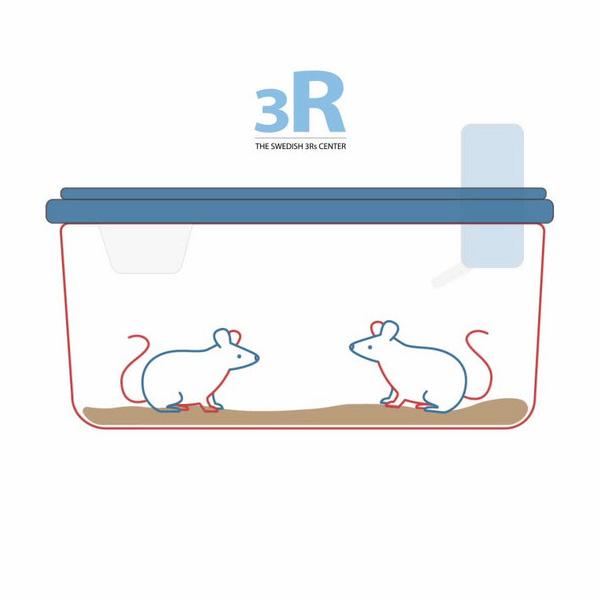IC-3Rs News
Symposium 3D Organ Modelling in Health and Disease
by Organoid @ KU Leuven
3D Organ Modelling in Health and Disease is the inaugural symposium at KU Leuven dedicated to the captivating field of 3D organ bioengineering. It will bring together representatives from various stakeholders (researchers, clinicians, industry) to present cutting-edge expertise and breakthroughs in 3D organ modelling and biomedical/translational application. The symposium is open to a wide public interested in the field, to learn on its immense potential in biomedical research, regenerative medicine and precision (personalized) drug discovery.
Abstract submission: at the latest by February 10th, 2024
Dates: 8 and 9 April 2024
Location: Onderwijs en Navorsing, Herestraat 49, 3000 Leuven. Near the Gasthuisberg hospital in Leuven, just a 10-minute bus ride from the city center.
Visit from Chinese regulators
by IC-3Rs at the VUB

On December 12th a Chinese delegation of cosmetics regulators in China visited the In Vitro Toxicology and Dermato-Cosmetology (IVTD) unit at the Vrije Universiteit Brussel (VUB). IC-3Rs was delighted to discuss the European regulations aimed to develop cosmetics without animal testing.
Contact us if you want to visit the The Innovation Centre 3Rs (IC-3Rs) at the Vrije Universiteit Brussel (VUB) to learn more on the implementation of the 3Rs (Replace, Reduce, Refine) in scientific research by using state-of-the-art technology and New Approach Methodologies (NAMs), our mission.
Fourth Educational Webinar on NAMs
by RE-Place
On the 12th of December from 4 to 5 pm CET, RE-Place organises a fourth educational webinar on bacterial assays. First, Prof. Charles Van Der Henst (VIB) will discuss his work on the antiphagocytic capsule of the WHO priority pathogen Acinetobacter baumannii. His presentation will be followed by Sien Lequeue (VUB) who will present her work on the development of a bacterial high-throughput screening system to evaluate missense variants of human homogentisate 1,2-dioxygenase in the context of alkaptonuria.
RE-Place organises this series of Educational Webinars which aims to promote the use and development of New Approach Methodologies (NAMs) by putting the existing knowledge in the spotlight.
All webinars are free of charge, but registration is mandatory
The 3R principle and the use of laboratory animals in biomedical research
by Swedish 3Rs Center

The Swedish 3Rs Center has created a short animated video that informs in a very accessible way about the 3R principle and the use of laboratory animals in biomedical research. Watch the video below in English.
Third Educational Webinar on NAMs
by RE-Place
RE-Place organises a series of Educational Webinars which aims to promote the use and development of New Approach Methodologies (NAMs) by putting the existing knowledge in the spotlight. The third session will take place on Thursday the 26th of October from 4 to 5 pm CET via Webex and will zoom in on NAMs in the fields of ecotoxicity and veterinary medicine.
During this session, we will have two speakers from the University of Ghent. First, Dr. Maaike Vercauteren will present the ‘Innovative two chamber skin explant model for marine and freshwater fish’. Her presentation will be followed by Ingrid Vernemmen who will discuss the development of an ‘Ultrasound compatible 3D model of the equine heart’.
All webinars are free of charge, but registration is mandatory
VUB increases commitment to 3Rs principle in animal testing policy
by Vrije Universiteit Brussel
As a humanist university, the Vrije Universiteit Brussel (VUB) believes that science and empathy go hand in hand. In research that involves animals, respect and welfare are paramount. VUB recently committed to be part of the regional action plan of Flemish Animal Welfare minister Ben Weyts to reduce animal testing. The plan supports the university in its ambition to promote alternatives to animal testing, with the 3Rs principle – replace, reduce and refine – as an ethical framework.
By participating in the Flemish initiative, 20 Belgian research institutions have committed to investing in alternatives to animal testing by drawing up their own action plans. VUB is also making this commitment, seeing it as an opportunity to promote the application of the 3R principle, in particular the development of animal-free research methods.
Second Educational Webinar on cellular models
by RE-Place
RE-Place organises a series of Educational Webinars which aims to promote the use and development of New Approach Methodologies (NAMs) by putting the existing knowledge in the spotlight. The second session will take place on the 14th of September from 4 to 5 pm CET via Webex and will zoom in on the development and optimisation of cellular models.
First, Léa Hiéronimus of the UCL will present his work titled 'From a 3D-model of particle-induced granuloma-like structure to a simple 2D-macrophage bioassay predicting granulomagenic and fibrotic activity of inhaled particles'. This presentation will be followed by Amar van Laar (UGent) who will discuss his work on the ‘Metabolism and Health Effects of Rare Sugars in a CACO-2/HepG2 Coculture Model’.
All webinars are free of charge, but registration is mandatory
The British national 3Rs centre NC3Rs presents RIVER
by British national 3Rs centre NC3Rs
The British national 3Rs centre NC3Rs presents RIVER (Reporting In Vitro Experiments Responsibly), a set of six recommendations specifically tailored to reporting in vitro studies such that manuscripts describe the minimum information necessary for a reader to assess the methodological rigour and reliability of the study.
Publications reporting in vitro experiments often lack basic details that prevent readers from repeating the experiments described or assessing whether the results are reliable. This prevents the experiments adding to the knowledge base and can lead to unnecessary subsequent studies. To address this, an international working group has been convened to develop reporting standards, drawing from its expertise in research funding and publishing, methodology and statistics, and research in academic, regulatory and industry settings.
Study Day on Animal Welfare in Brussels
by IC-3Rs

On Monday, March 27, 2023, IC-3Rs participated in an interesting study day on welfare in laboratory animals and non-animal methods. Fifteen different speakers gave short presentations on the goals of the scientific organizations they are affiliated with or on their research using non-animal methods. Read the report of the event here: in dutch or in french.
